World Class Catamarans 2004 World Class 270SD Owner's manual
- Category
- Engine
- Type
- Owner's manual
This manual is also suitable for

2005
O
WNER'
S
MAN
U
AL

World Class Catamarans
Table of Contents
Customer Information ................................................................. I
Chapter 1: Safety and Regulations
Operator Responsibilities ............................................................. 1-1
Registration ................................................................................. 1-1
Coast Guard Required Safety Equipment ..................................... 1-1
Recommended Safety Equipment................................................. 1-2
Capacity Information ................................................................... 1-2
Pollution Regulations................................................................... 1-3
Oil and Hazardous Substances..................................................1-3
Disposal of Plastics/Dunnage/Garbage .....................................1-3
Boating Safety Guidelines ............................................................ 1-4
Pre-Departure ...........................................................................1-4
Launching.................................................................................1-4
Underway..................................................................................1-4
Returning .................................................................................1-4
Trailering..................................................................................... 1-5
Anchoring.................................................................................... 1-5
Shallow Water.............................................................................. 1-5
Emergency Situations.................................................................. 1-6
Emergency Stop Switch.............................................................1-6
Communication ........................................................................1-6
Rendering Assistance ................................................................1-6
Reporting Accidents ..................................................................1-6
Weather ....................................................................................1-6
Towing ......................................................................................1-6
Carbon Monoxide ........................................................................ 1-7

World Class Catamarans
Chapter 2: Performance
Overview...................................................................................... 2-1
Motor Trim
Bow Up Condition .....................................................................2-1
Bow Down Condition.................................................................2-1
Engine Controls........................................................................... 2-2
Steering Controls......................................................................... 2-2
Steering Maintenance .................................................................. 2-2
Steering System Diagram............................................................. 2-3
Steering System Bleeding Instructions ......................................... 2-4
Handling Characteristics ............................................................. 2-5
Turning Characteristics ............................................................2-5
Adverse Sea Conditions .............................................................2-5
Boating Tips ................................................................................ 2-6
Performance Factors.................................................................... 2-6
Engine Efficiency ......................................................................2-6
Propeller Condition ...................................................................2-6
Weather Conditions...................................................................2-6
Load..........................................................................................2-7
Marine Growth..........................................................................2-7
Bottom Paint.............................................................................2-7

World Class Catamarans
Chapter 3: Systems Information
Overview...................................................................................... 3-1
Fueling Guidelines
Before Fueling...........................................................................3-1
During Fueling..........................................................................3-1
After Fueling .............................................................................3-1
Fuel System................................................................................. 3-2
Fuel System Diagram................................................................... 3-2
Electrical System ......................................................................... 3-3
Battery System ............................................................................ 3-3
Battery Distribution ..................................................................3-3
Voltage Sensor Relay .................................................................3-4
Emergency Parallel....................................................................3-4
24 Hour Circuits .......................................................................3-4
Anchor Windlass .......................................................................3-4
Battery Selection ......................................................................... 3-4
Battery Care ................................................................................ 3-5
Wiring and Circuit Protection....................................................... 3-6
Digital Control System ................................................................. 3-6
Typical Digital Control Diagram ................................................... 3-7
Accessories.................................................................................. 3-8
Gauge Packages........................................................................... 3-10
Yamaha™..................................................................................3-10
Honda™....................................................................................3-10
Suzuki™ ...................................................................................3-10
Plumbing Systems ....................................................................... 3-10

World Class Catamarans
Chapter 4: Maintenance and Service
Overview...................................................................................... 4-1
Gelcoat Maintenance ................................................................... 4-1
Cleaning ...................................................................................4-1
Waxing......................................................................................4-1
Repair .......................................................................................4-2
Bottom Paint ............................................................................... 4-2
Upholstery................................................................................... 4-3
Trim/Plexiglass/Polyethylene ...................................................... 4-3
Stainless/Aluminum ................................................................... 4-3
Bilge Compartments .................................................................... 4-3
Cockpit Drains ............................................................................ 4-3
Winterization ............................................................................... 4-4
Chapter 5: Model Specific
Table of Contents......................................................................... 5-1
Model Specific information for your boat
Warranty Information

World Class Catamarans
CUSTOMER INFORMATION
OWNER’S PORTFOLIO
To help you enjoy the many features, benefits, and accessories on your new World Cat, we
have provided you with the following materials:
•World Class Catamaran Owner’s Manual (model specific)
• Vendor Supplied Manuals for various accessories
• Delivery Checklist
•Warranty Information
We refer to this package as the “Owner’s Portfolio”, and will reference it often throughout
this text. The portfolio contains a wealth of information, including advice on safety, operation,
performance, maintenance, and warranty. Reading and maintaining this information is
extremely important, and could be the difference between a positive and negative experience on
the water.
For you convenience, World Cat also provides the NMMA text Sportfish, Cruisers, Yachts
Owner’s Manual. It will be referenced occasionally in your owner’s manual, and provides supple-
mental information on safety and basic boating practices.
WARRANTY INFORMATION
Upon purchasing your new World Cat, the dealer is responsible for completing the warranty
card provided by the factory. The form is in triplicate, with one copy for you, the dealer, and the
factory. Keep your copy in a secure place so it can be referenced quickly in the event of a war-
ranty issue. The 10 year limited hull warranty is transferable, and a copy is included at the back
of this manual should you decide to sell your boat.
DEALER RESPONSIBILITIES
Our dealers are an extension of the factory, and we expect them to provide you with great
customer service and help prepare you for a positive ownership experience. Therefore, we set
forth a list of responsibilities for our dealers as follows:
• Provide courteous service and explanation of the product prior to the sale.
• Provide sea trials, if requested, for potential owners.
• Provide a detailed orientation of your boat’s features and general operation upon delivery,
including safety and performance.
• Complete and sign delivery checklist.
• Explain, complete, and submit all warranty information in a timely manner after the pur-
chase.
• Provide the customer with the “Owner’s Portfolio” and explain the information included
therein.
• Provide service after the sale, or help the customer locate a qualified service at home or
away.

World Class Catamarans
OWNER’S RESPONSIBILITIES
As A Consumer you should also take an active part in the delivery and safe operation of your
new catamaran. Some of your responsibilities are:
• Study and understand the limited warranty information.
• Read all literature in your “Owner’s Portfolio” and operate the vessel in accordance with
those instructions.
• Perform a walk through prior to the final delivery and ensure that the systems are func-
tioning properly.
• Maintain the boat and perform service according to the instructions in this manual,
including the 20 hour inspection for the vessel and engines.
Once your warranty information is processed, World Class Catamarans will maintain a
record of your boat using the Hull Identification Number (HIN), which is located on the star-
board side of the transom. Information regarding the dealership, owner, and the factory
installed accessories will be recorded to help you should a problem arise. Also, you will receive
an invitation to join Team World Cat and a survey to rate your purchasing experience and the
initial impressions of our company. We ask that you join our family of owners and let us know
your feelings about the purchase and the quality of our product.
MANUAL LEGEND
Throughout this manual you will encounter signals to alert of important information. Text
printed in bold letters and the warning system shown below is of particular importance. Please
review this information prior to reading the manual.
! DANGER
THIS SYMBOL ALERTS YOU TO HAZARDS OR UNSAFE PRACTICES WHICH WILL CAUSE EXTENSIVE
PROPERTY DAMAGE, SEVERE PERSONAL INJURY OR DEATH IF THE WARNING IS IGNORED.
! WARNING
THIS SYMBOL ALERTS YOU TO HAZARDS OR UNSAFE PRACTICES WHICH CAN CAUSE EXTENSIVE
PROPERTY DAMAGE, SEVERE PERSONAL INJURY OR DEATH IF THE WARNING IS IGNORED.
! CAUTION
THIS SYMBOL ALERTS YOU TO HAZARDS OR UNSAFE PRACTICES WHICH CAN CAUSE PERSONAL
INJURY OR PROPERTY DAMAGE IF THE WARNING IS IGNORED.
NOTICE
THIS SYMBOL IS NOT HAZARD RELATED. IT CONTAINS INFORMATION ON INSTALLATION, OPERA-
TION, OR MAINTENANCE WHICH IS NEEDED TO ENSURE THE PROPER OPERATION OF YOUR BOAT.

World Class Catamarans
1-1
CHAPTER 1
SAFETY AND REGULATIONS
OPERATOR RESPONSIBILITIES
Prior to enjoying your World Cat, it is important to read and understand all the information
detailed in your “Owner’s Portfolio”. Knowing how to operate and maintain the systems on your
vessel can make your experiences safe and enjoyable, as well as increase the performance and
longevity of your boat. Federal law and most state laws clearly indicate that it is the operator’s
responsibility to maintain their vessel, and to operate it in a manner which protects the safety of
their passengers and others. Reference page 8 of the Sportfish, Cruisers, Yachts Owner’s Manual
for a detailed list of owner responsibilities.
This manual will provide you a basic understanding of boating practices; however, we rec-
ommend all owners review federal, state, and local regulations regarding safety and traffic prior
to using your World Cat. The U.S. Coast Guard Auxiliary and U.S. Power Squadrons offer excel-
lent educational opportunities on a local level and are open to anyone. If a chapter does not exist
in your area, reference page 8 of the Sportfish, Cruisers, Yachts Owner’s Manual or contact the
following numbers for other educational opportunities:
BOATING EDUCATION HOTLINE ..................... 1-800-336-BOAT (2628)
U.S. COAST GUARD BOATING HOTLINE .......... 1-800-368-5647
REGISTRATION
Vessels are required by federal and state law to be registered in the state where they are pri-
marily used. Registration numbers and validation stickers must be displayed per regulations,
and a certificate of registration must be on board while the vessel is being operated. When trav-
eling away from your home waters, contact authorities at your destination to determine if any
additional registration is required. Some areas require permits or temporary registrations to
operate in their waters. When completing registration forms you will be asked for the Hull Iden-
tification Number (HIN). On your World Cat, the HIN is located on the starboard side of the tran-
som. This number is unique to your boat and will be important for registering your vessel, as
well as, communicating with your dealer and our service department. Including this information
in any correspondence or conversations will help our support network serve you better.
COAST GUARD REQUIRED SAFETY EQUIPMENT
Once you have reviewed safe boating guidelines and filed for registration, it is time to equip
your vessel. The U.S. Coast Guard’s (U.S.C.G.) list of required equipment is shown below. To
review the guidelines for each item, reference pages 17 and 18 of the Sportfish, Cruisers, Yachts
Owner’s Manual.
• Audible Signaling Device (Bell, Horn, or Whistle)
• Fire Extinguisher
• Navigation / Anchor Lights
• Flotation Devices (PFD’s)
• Visual Signaling Devices
NOTICE
Remember to check with state and local agencies to ensure that additional items
are not required to operate your boat in their waterways.

World Class Catamarans
1-2
RECOMMENDED SAFETY EQUIPMENT
Although not required, there are several additional items which help to ensure safety, and
provide convenience for you and passengers. A list of these items can be found in the Sportfish,
Cruisers, Yachts Owner’s Manual on page 18. Perform an annual inventory to keep tools, spare
parts, and safety equipment in good condition. Immediately replace any items that have been
removed from the kit.
CAPACITY INFORMATION
On all boats under 26 feet in length, the
manufacturer is required to provide capacity
information. If you own a 230 SF, 250 SF, or 250
DC you will find a rectangular metal plate near
the helm. This plate will provide information on
horsepower ratings and total capacities which
include person capacities, motor(s) and gear. As
an owner you should be aware of the weight on
board. Exceeding capacity can endanger your
passengers and vessel, as well as void any war-
ranty remaining on the boat should a failure
occur. Remember this is a guideline for normal
operation, and does not release you from
responsibility should an accident occur. You
must use rational judgement when adverse con-
ditions are expected, and reduce your loads to
create a margin of safety.
Pursuant to NMMA certification, all World Cats over 26’ in length are “Yacht Certified” and
carry the placard shown below. Person and gear capacities are not predetermined, they are left
to the operator’s discretion. Therefore, the amount of load allowed onboard should result from
considering all safety precautions.
Horsepower ratings, however, are set
by World Class Catamarans and
should not be exceeded. The second
page in Chapter 5 of this manual will
provide information on the maximum
horsepower ratings for your boat.
Exceeding the factory recommendation
will result in loss of warranty coverage
on your vessel.
! CAUTION
Use only marine grade replacement parts. Most automotive and residential parts
are not suitable for use in the harsh marine environment. Using them could lead to
premature product failure, property damage, or personal injury.

World Class Catamarans
1-3
POLLUTION REGULATIONS
The Refuse Act of 1899 prohibits throwing, discharging or depositing any refuse matter of
any kind (including trash, garbage, oil and other liquid pollutants) into the waters of the United
States. This information is provided in a pamphlet, that normally received when registering your
boat. Use the information below as a guideline, but study the pamphlet and understand any
local regulations regarding pollution control. As the operator, you are also liable for individuals
on your vessel disposing of materials in an improper manner.
OIL AND HAZARDOUS SUBSTANCES
The Federal Water Pollution Control Act prohibits the discharge of oil or hazardous sub-
stances which may be harmful into U.S. navigable water. Vessels 26 feet in length and over
must display a placard at least 5 by 8 inches, made of durable material. The placard must
be installed in a conspicuous place in the rigging compartments or near the bilge pumps
and state the following:
DISPOSAL OF PLASTICS/DUNNAGE/GARBAGE
Boats 26 feet in length and over must display a Save Our Seas Placard which outlines the
rules for dumping waste offshore. The placards must be at least 4” x 9” and should be dis-
played in an area visible during normal operation. They can be purchased from your
dealer or marine equipment suppliers.

World Class Catamarans
1-4
BOATING SAFETY GUIDELINES
As an owner/operator you should be prepared to handle any situation which arises before
departure, while underway, or upon return to dock. Careful planning will add safety and plea-
sure to your experience and give you the confidence to handle emergencies if they develop.
Listed below are some general guidelines which you should follow before any trip:
PRE-DEPARTURE:
• Establish a float plan and provide it to a person whom you trust. The plan should give the
details of your trip, including where you are going and when you expect to return. If you
deviate from the plan, notify that person as soon as possible.
• If you anticipate operating in a new area, understand the local rules and request charts or
information on any hazards you may not be aware of.
• If you are towing the boat, inspect the trailer including tires, lights, brakes, winch, and
overall mechanical appearance. For trailering information see page 4
• Verify that you have all necessary safety equipment. This should include all the USCG
required equipment as well as spare parts or other items you decided to include.
• Check fuel levels and determine if you require additional fuel for your trip.
• Examine the weight of the gear on your vessel and make sure you are not overloaded. Dis-
tribute the weight evenly on your vessel to ensure predictable performance.
LAUNCHING:
• Prepare your boat prior to backing down, (i.e. secure all lose items, install garboard drain),
then launch your vessel and move away quickly.
• Move your vessel away from the dock and complete a full system check. Ensure that elec-
tronics, pumps, and safety equipment are in working order.
• Instruct a passenger on the operation of the boat, and the location and function of all
safety equipment onboard. You should never be the only person capable of safely operating
your vessel.
UNDERWAY: (INFORMATION ON OPERATION AND HANDLING IS LOCATED IN CHAPTER 2)
• Obey all “Rules of the Road” and any local regulations. Use the information located on
page 19 of the Sportfish, Cruisers, Yachts Owner’s Manual to understand right of way and
the various navigational and hazard indicators you will see on the water.
• Never operate a boat under the influence of alcohol or drugs.
• Do not allow individuals under the age of 16 to operate the vessel. Maintain direct supervi-
sion of inexperienced operators.
• Ensure that all passengers are safely seated while underway, and are using the hand rails
World Class has provided to remain securely in their seats.
• Use your electronics and judgement to remain abreast of changing weather. Storms
develop quickly and you should be prepared to protect your passengers and vessel. See
page 16 of the Sportfish, Cruisers, Yachts Owner’s Manual for more tips on weather.
• Maintain a safe speed and respect other boaters as well as those on land. Obey all “No
Wake Zones” and be aware of smaller vessels. The wake you produce could endanger other
crafts and their passengers.
• Know the limitations of your craft and your experience. Understand the boats handling
characteristics and do not attempt to operate the vessel in conditions that are unsafe or
beyond your experience level.

World Class Catamarans
1-5
RETURNING
•Obey navigational markers and be aware of any tidal changes since departure.
• Collect and dispose of refuse properly to maintain our waters for future generations.
• Prepare your boat for loading before moving to the dock. Quickly pull your vessel from the
water and move away from the ramp to complete the preparation for trailering.
• Verify that trailer systems are working properly and all items are secured before leaving.
• Wash the boat and perform general maintenance, upon returning home. (See instructions
in Chapter 4).
As stated above, these are only general guidelines for safe boating. We recommend using
these and any other available resources to protect your passengers as well as your vessel.
Checklists can be an important tool in accomplishing this, see the example on page 35 of the
Sportfish, Cruisers, Yachts Owner’s Manual.
TRAILERING
Due to the nature of the hull, catamarans require specialized trailers. Your dealer will be
able to provide them, as well as, information on safe trailering practices. Tow vehicles should be
rated to handle the load and stresses which accompany trailering your boat. A properly matched
trailer should carry 5-10% of the total vessel weight on the tongue. Routine inspections should
be performed on the vehicle and trailer prior to each trip, and thorough checks scheduled on an
annual basis.
ANCHORING
World Cat offers an anchor and anchor windlass as optional equipment on all boats. The
anchor we supply is known as a plow style. However, there are several types of anchors avail-
able, each designed to operate in specific bottom conditions. Your dealer can provide informa-
tion on which styles are most effective in your area. See page 46 of the Sportfish, Cruisers,
Yachts Owner’s Manual for more information and tips concerning anchoring.
SHALLOW WATER
Although your World Cat draws a small amount of water for its size, shallow water should be
a concern of all boaters. To avoid this hazard, pay particular attention to navigational markers
and know the area you are operating in. Be aware of tidal changes, including those that have
occurred during your trip. Rocks, stumps, or other hazards are more prevalent in shallow water
and can cause major damage to your hull bottom. Engines can also suffer damage if they are
allowed to run in the sand or mud.
If you do become grounded, tilt the motors up to reduce the draft at the transom. Often this
will solve the problem; however, it may be necessary to rock the boat from side to side to break
the suction along the keel. If you are grounded on an incoming tide, allowing the water to rise
can help. Being grounded on an outgoing tide is a larger issue, you need to act quickly to free
your boat and avoid being driven further aground. Use the anchor to secure the boat and await
the incoming tide, or use it to pull yourself free.
! CAUTION
Never anchor your boat off the stern. The weight at the transom, combined with
adverse sea conditions could allow water to enter the boat over the transom wall.

World Class Catamarans
1-6
EMERGENCY SITUATIONS
Unfortunately, even the safest boating practices cannot eliminate the potential of emergency
situations developing. Therefore you should prepare yourself, and your crew, to handle any
problems that may arise. Establish specific plans for fires, man overboard, collision, etc., and
review them with your passengers prior to departing. Planning allows people to remain calm,
and gives everyone the confidence to resolve the problem. Section 4 of the Sportfish, Cruisers,
Yachts Owner’s Manual provides information on emergency procedures. Below is important
information which all owners should be aware.
EMERGENCY STOP SWITCH
Lanyard clips are provided on all World Cats and when used properly provide an emer-
gency stop for the engines should the driver fall from the helm position, or need to perform
an emergency shutdown to respond to or avoid an accident. The clip attaches the driver to
the ignition panel using a cord. A pull on the cord will release the clip from the shut-off
switch on the panel and shutdown the engines. To restart the engines, simply reinstall the
clip. This should only be used to prevent or react to accidents, and the operator is solely
responsible for the decision.
COMMUNICATION
If you witness an emergency or become involved in one, you should request assistance via
radio communication or visual signals. Review the information in Section 4 of the Sport-
fish, Cruisers, Yachts Owner’s Manual for detailed information on how and when to request
assistance.
RENDERING ASSISTANCE
Owners are required by law to render assistance to other boaters involved in an emergency
situation such as fire, collision, casualty, etc., as long as it does not endanger your vessel
or its passengers.
REPORTING ACCIDENTS
Federal regulations require that operators involved in an accident file a written account of
the situation within 48 hours. Reports should be submitted to the State Boating Law
Administrator. You can obtain forms through the USCG or local authorities (i.e. harbor
patrol, sheriff or police offices). In the event that a casualty or disappearance occurs as the
result of an accident, you must notify the authorities immediately by phone or radio and
fill out a written statement.
WEATHER
Pay attention to weather patterns. If you find yourself in the path of a storm, seek shelter
immediately. If you cannot reach a dock, seek refuge inside the boat while the storm
advances. Never get in the water, and stay clear of metal components on your boat. If light-
ning strikes, it would likely pass through metal objects seeking a ground.
TOWING
Due to an accident or loss of power, it may become necessary to tow another vessel or have
your boat towed. If you are providing assistance, never attempt to tow a boat larger than
your own. Be certain to use proper lines (ropes) and rational judgement to prevent further
damage. Tow lines are under heavy strain, therefore passengers should remain clear of the
lines to protect themselves from injury. For more information on towing, reference page 30
of the Sportfish, Cruisers, Yachts Owner’s Manual.

World Class Catamarans
1-7
CARBON MONOXIDE (CO)
One of the most important considerations when dealing with boating safety is carbon mon-
oxide. Commonly referred to as (CO), carbon monoxide is a colorless, odorless, and tasteless gas
emitted from any engine exhaust. Including inboards and outboards. A CO particle is close in
weight to the air we consume; therefore it does not rise or fall in the atmosphere, but accumu-
lates in enclosed spaces. Boat owners with enclosed heads, cabins, or canvas enclosures should
pay particular attention to CO. Be aware that fumes produced on your boat can affect other ves-
sels and other boats can affect you. A primary concern is the use of generators when boats are
moored adjacent to each other.
Carbon Monoxide is poisonous and potentially fatal if inhaled over an extended period of
time. Symptoms of CO poisoning include:
•Dizziness
•Nausea / Vomiting
•Headache / Throbbing in the temples
•Fatigue
•Muscular twitching
•Inability to focus or think clearly
If you or any of passengers experience any of these symptoms, leave the area and find a
source of fresh air immediately. If your symptoms persist, seek medical attention.
! DANGER
Carbon Monoxide (CO) is a colorless, odorless, and tasteless gas produced by the
exhaust system of any combustible engine. CO can cause brain damage or death, if
inhaled over an extended period of time. To protect yourself and your passengers,
never block the ventilation outlets in cabins, consoles, or other enclosed spaces.

World Class Catamarans
2-1
CHAPTER 2
PERFORMANCE
OVERVIEW
This chapter will provide information on the performance characteristics of your catamaran;
This is not a substitute for seamanship training or hands-on experience. First time boat owners
should use the resources detailed in Chapter 1 to learn proper methods of boat operation. Expe-
rienced boaters who have never owned a catamaran, should study this chapter completely. Do
not assume that previous boating experience will apply to all situations, as there are several
subtle differences in the handling characteristics of twin hulled boats. For existing catamaran
owners, this chapter should be a reference.
MOTOR TRIM
The smooth riding characteristics of a catamaran are a result of the twin hull design. Their
ability to slice through oncoming waves is far superior to the slamming characteristics seen on
conventional vessels. Motor trim plays an integral part in how your catamaran accomplishes
this. In a level or bow down attitude, your boat will slice through larger chop but you may expe-
rience sluggish performance, a wetter ride and increased bow steering in a following sea. In a
bow up attitude the boat will perform better, but may ride less smoothly. Experiment with the
trim settings in various sea conditions to determine what you are most comfortable with. When
using the trim to correct a listing condition, imagine an “X” connecting the starboard engine to
the port bow, and port engine to the starboard bow (see drawing below).
BOW UP CONDITION
To correct a bow up condition on the port
sponson, adjust the motor trim “down” on the
starboard engine. This will help the starboard
sponson to rise and level the vessel. If moving
to the lowest trim setting on the starboard
engine does not correct the list, trim the port
engine “up” to assist the change. Reverse the
instructions to accommodate for a bow up con-
dition on the starboard sponson.
BOW DOWN CONDITION
To correct a bow down condition on the port
sponson, adjust the motor trim “up” on the
starboard engine. This will help the starboard
sponson to fall and level the vessel. If cavitation
occurs on the starboard engine, lower it to cor-
rect the problem, then trim the port engine
“down” to assist the change. Reverse the
instructions to accommodate for a bow down
condition on the starboard sponson.

World Class Catamarans
2-2
ENGINE CONTROLS
All factory rigged boats will come equipped with a binnacle control specific to your type of
engine. Located at the helm, the binnacle controls the throttle, shift, and trim mechanisms for
your engine. For diagrams and general information about this system, review pages 70 and 71
of the Sportfish, Cruisers, Yachts Owner’s Manual. Also read the owner’s manual provided by
your engine manufacturer to determine how to operate the features on your binnacle. If any
components of this system need to be replaced, be certain to use the same style and length as
the original equipment.
STEERING CONTROLS
Catamarans offer unsurpassed steering control. The wide spacing of the engines, advanced
steering components, and handling characteristics of the World Class hull give operators excep-
tional maneuverability in even the tightest spaces.
Because of the superior tracking abilities of the World Cat hull, oversteering can present a
problem, especially for owners accustomed to operating conventional boats. Conventional ves-
sels have a tendency to lose tracking abilities in rough and following sea conditions, making
constant course corrections necessary. However, catamarans do not exhibit those traits and
require operators to take a “hands off” approach. To do so, relax your grip and fight the urge to
make constant corrections.
STEERING MAINTENANCE
The design of a catamaran hull requires a special steering system which features a “liquid
tie-bar”, as opposed to the mechanical version used in conventional boats. For this reason, all
World Cats are equipped with a hydraulic steering system, featuring steering cylinders mounted
on each engine and a steering system valve. This system enables both engines to respond in
unison to adjustments at the helm.
In order to maintain the excellent steering characteristics of your boat, occasionally you will
need to adjust the steering system to realign the motors (known as motor toe). To do so follow
these instructions:
1. Using the helm, center the starboard motor.
2. Find the steering system valve, located under the inspection port on the center of the
transom.
3. Open the valve by rotating it 90 degrees (the handle will be parallel to the valve body
when open). This will isolate the port engine, so that it can be adjusted manually.
4. Center the port motor manually; then close the steering system ball valve and reinstall
the inspection port.
Similar to hydraulic braking systems in an automobile, it may become necessary to bleed
the steering system occasionally to remove air from the lines. We have provided diagrams of the
steering system on pages 4 thru 5, and the Teleflex™ owner’s manual in your “Owner’s Portfo-
lio”. Use the resources, and your dealer, to keep the steering system in excellent working order.
Be aware, these are routine maintenance procedures and are not covered under warranty by
World Class Catamarans.
! CAUTION
Routinely check hydraulic fluid levels, and all connections for leaks or any sign of
mechanical failure. Lubricate all mechanical parts at least annually with high qual-
ity marine grease. Failure to do so may result in impaired or unresponsive steering.

World Class Catamarans
2-3
STEERING SYSTEM DIAGRAM
P
O
R
T
S
T
B
D
A
B
C
E
D
ITEM
A
B
C
D
E
DESCRIPTION
STEERING CYLINDERS
KEVLAR PIGTAIL 4’−6’
KEVLAR STEERING HOSE
STEERING SYSTEM VALVE
SEA STAR II HELM
QUANTITY
2
3
2
1
1
THIS IS A REPRESENTATION OF A TYPICAL WORLD
CAT STEERING SYSTEM. THE LENGTHS OF THE
STEERING HOSES AND PIGTAILS WILL VARY
DEPENDING ON THE MODEL YOU HAVE.

World Class Catamarans
2-4
STEERING SYSTEM - BLEEDING INSTRUCTIONS
Reference the bleeding instructions provided by the Teleflex™ owner’s manual, which is
included in your “Owner’s Portfolio”. Use them in conjunction with the instructions and diagram
below to bleed the steering system. This should be done annually.
STEP 1
1. Using a filler tube, fill the
helm with oil. When com-
pleted, you should be able
to see oil in the filler tube.
2. Open the steering system
valve located under the
inspection plate in the cen-
ter of the transom.
STEP 2
1. Open the bleed fitting
labeled #1 and pull the cyl-
inder shaft all the way out
on the fitting #1 side.
2. Holding the shaft to prevent
it from moving back into the
cylinder, have someone turn
the wheel clockwise until a
steady stream of oil flows
through the fitting.
3. Close bleed fitting #1.
STEP 3
1. Open the bleed fitting
labeled #2. and pull the cyl-
inder shaft all the way out on the fitting #2 side.
2. Holding the shaft to prevent it from moving back into the cylinder, have someone turn
the wheel counter-clockwise until a steady stream of oil flows through the fitting.
3. Close bleed fitting #2 and repeat Step 3 for bleed fittings #3 and #4.
STEP 4
1. When you complete the bleeding process, turn the wheel hard over in each direction at
least twice. Then manually adjust the cylinders by pulling the shaft all the way out on
the same side of each cylinder and closing the steering system valve.
NOTICE
If possible, have your dealer or trained marine technician perform routine mainte-
nance or repairs on your steering system. Replace faulty parts immediately.
2
clockwise
steering
system valve
counter
clockwise
43 1

World Class Catamarans
2-5
HANDLING CHARACTERISTICS
World Class Catamaran’s patented Vectroflo™ hull is a semi-displacement hull, which
exhibits characteristics of both planing and displacement hulls. Planing hulls provide speed and
economy of operation since a limited amount of the hull is in contact with the water. However,
they feature flat sections along the chine which can result in poor handling at low speeds and
harder impacts at high speed. Displacement hulls provide superior handling characteristics,
even at low speed, and an improved ride in rough water. Speed and economy suffer however,
since more of the hull is submerged. World Class has taken the best characteristics of these two
designs and incorporated them in the Vectroflo™ hull. Our proven design provides a superior
ride, excellent handling characteristics in a variety of conditions, and speed with economy of
operation. To help you experience “The Ultimate Ride”, study the following sections.
TURNING CHARACTERISTICS
Turning a catamaran is slightly different than cornering on a conventional vessel. Imagine
the difference between an automobile and a motorcycle. Automobiles take turns in a flat-
ter, more stable, manner similar to catamarans hulls, while motorcycles pitch hard into a
turn similar to a monohull. Do not underestimate a catamaran’s cornering ability however,
hard adjustments to the steering wheel can make a World Cat bite quickly and execute
high performance turns. Experiment with the handling ability of your cat so you are pre-
pared for any situation on the water.
ADVERSE SEA CONDITIONS
Catamarans are designed to handle some of the roughest waters in the world, but that is
no substitute for common sense. As an operator you are responsible for the safety of your
passengers and vessel; therefore, your trips should be limited by your level of experience.
Planning and paying constant attention to the weather and sea conditions is paramount. If
you are forced to operate in dangerous seas however, you can be confident that your World
Cat, when operated properly, can handle them safely. Following are some tips on how to
handle your boat in adverse sea conditions.
• When traveling into the wind, changing your direction a few degrees to allow one
sponson to settle before the other, can make the ride smoother and allow for
increased speed.
• In a rough chop with short wave intervals, increasing your speed may allow the
boat to skim across the tops of each wave. This will result in a smoother ride.
• Steer to avoid larger swells and breaking waves.
• In a following sea, position your vessel on the back of a wave and match its speed
to remain ahead of the trough. Speed is paramount. Work the throttle to avoid
going over the wave or being thrown down the face of a following wave.
• When entering an inlet, use the same method of matching wave speeds. Often
there are breakers in an inlet so be aware of shallow water conditions.

World Class Catamarans
2-6
BOATING TIPS
Experience is the best way to determine the handling characteristics of your catamaran.
Operating the boat in multiple sea conditions and under various loads will help you predict how
the boat will perform in any situation. World Cat provides the following recommendations
regarding the performance of your catamaran:
• Establish an RPM chart which details the speed and fuel consumption at various
RPM levels to achieve the most economical operation.
• Monitor fuel gauges to determine the amount of operating time remaining at a
given reading.
• Determine minimum speed for effective steering in close quarters.
• Determine the turning radius required at various speeds.
• Determine the rates of acceleration and deceleration with various load condi-
tions. Include the distance required to stop the boat at various speeds.
Use the information provided in section 6 of the Sportfish, Cruisers, Yachts Owner’s Manual
for more information on boat handling.
PERFORMANCE FACTORS
Proper setup and maintenance of the systems on your boat is important to ensuring proper
performance, but be aware they are not the only factors which affect it. Several things which
contribute to the level of performance of your catamaran can change between or during trips.
ENGINE EFFICIENCY
Without proper maintenance, your engine(s) will gradually lose power, resulting in a loss of
speed. Use the recommendations in the engine’s owners manual to schedule routine main-
tenance procedures and as a guide for the correct RPM range for your engines. Neglecting
to do so may result in loss of performance and an increased risk of failure.
PROPELLER CONDITION
The size and condition of your prop also plays a major role in the performance of your cat-
amaran. A damaged prop can result in lower speeds, sudden drops in RPM, increased fuel
consumption, and severe vibration while running. Improperly sized props can cause dam-
age to your engine as a result of exceeding the maximum or minimum RPM levels.
WEATHER CONDITIONS
Barometric pressure and humidity can affect the output of your engines. For example, on
an extremely hot and humid day, your engine can experience as much as a 10 percent loss
in horsepower. Although you should monitor your engines’ performance, be aware that the
weather could be a major factor in your boats performance.
Page is loading ...
Page is loading ...
Page is loading ...
Page is loading ...
Page is loading ...
Page is loading ...
Page is loading ...
Page is loading ...
Page is loading ...
Page is loading ...
Page is loading ...
Page is loading ...
Page is loading ...
Page is loading ...
Page is loading ...
Page is loading ...
Page is loading ...
Page is loading ...
Page is loading ...
Page is loading ...
Page is loading ...
Page is loading ...
Page is loading ...
Page is loading ...
Page is loading ...
Page is loading ...
Page is loading ...
Page is loading ...
Page is loading ...
Page is loading ...
Page is loading ...
-
 1
1
-
 2
2
-
 3
3
-
 4
4
-
 5
5
-
 6
6
-
 7
7
-
 8
8
-
 9
9
-
 10
10
-
 11
11
-
 12
12
-
 13
13
-
 14
14
-
 15
15
-
 16
16
-
 17
17
-
 18
18
-
 19
19
-
 20
20
-
 21
21
-
 22
22
-
 23
23
-
 24
24
-
 25
25
-
 26
26
-
 27
27
-
 28
28
-
 29
29
-
 30
30
-
 31
31
-
 32
32
-
 33
33
-
 34
34
-
 35
35
-
 36
36
-
 37
37
-
 38
38
-
 39
39
-
 40
40
-
 41
41
-
 42
42
-
 43
43
-
 44
44
-
 45
45
-
 46
46
-
 47
47
-
 48
48
-
 49
49
-
 50
50
-
 51
51
World Class Catamarans 2004 World Class 270SD Owner's manual
- Category
- Engine
- Type
- Owner's manual
- This manual is also suitable for
Ask a question and I''ll find the answer in the document
Finding information in a document is now easier with AI
Related papers
Other documents
-
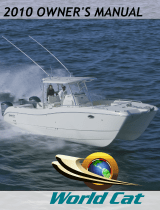 World Cat 270SD 2009 Owner's manual
World Cat 270SD 2009 Owner's manual
-
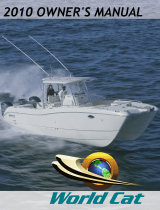 World Cat 2010 290CC Owner's manual
World Cat 2010 290CC Owner's manual
-
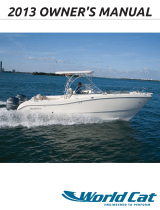 World Cat 2013 255DC Owner's manual
World Cat 2013 255DC Owner's manual
-
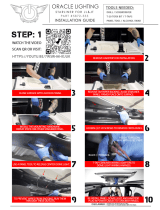 ORACLE LIGHTNING 5872-333 Installation guide
ORACLE LIGHTNING 5872-333 Installation guide
-
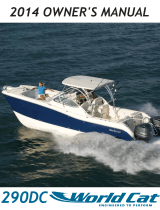 World Cat 290DC Owner's manual
World Cat 290DC Owner's manual
-
Emeril Lagasse 70172 User guide
-
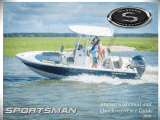 Sportsman Masters 227 Bay Boat Owner's manual
Sportsman Masters 227 Bay Boat Owner's manual
-
 Sportsman Masters 227 Bay Boat Owner's manual
Sportsman Masters 227 Bay Boat Owner's manual
-
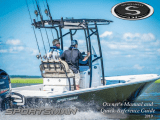 Sportsman Tournament 234 Bay Boat Owner's manual
Sportsman Tournament 234 Bay Boat Owner's manual
-
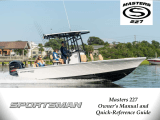 Sportsman Masters 227 Bay Boat Owner's manual
Sportsman Masters 227 Bay Boat Owner's manual




























































